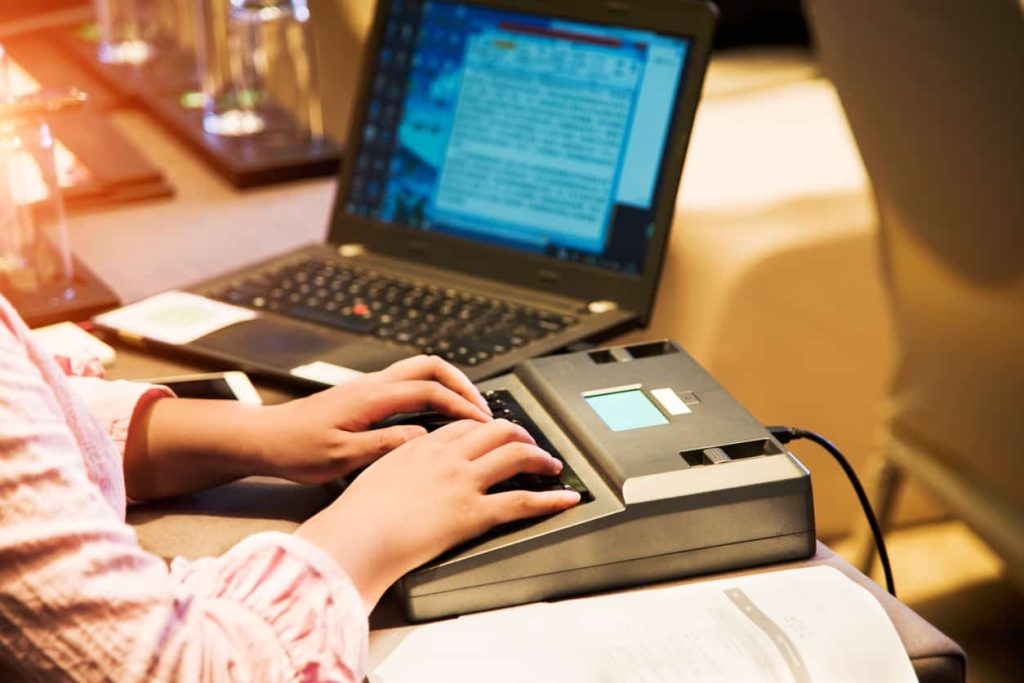The duty of a court reporter is to transcribe spoken or recorded speech into written form with the use of a stenotype, a specialized typewriter. It is designed to allow shorthand typing for quick and easy transcription. The process is one in which helps to ensure legal rights are protected during a legal process, such as in court, during a public hearing or tribunal.
Every court reporter is required to type 225 words per minute, this is done through a stenotype machine. The stenotype has 22 black, unmarked keys set up in a way that resembles a piano’s keys more closely than a typical qwerty keyboard.
The machine produces a phonetic code that relates to sound – The trick to keeping up with conversations is to use various key combinations in the stenotype machine. The reporter’s left hand types the beginning consonant sounds, thumbs produce vowel sounds, and the right hand types the final consonant sounds.
Currently, court reporters have adopted a common translation instead of using their own personalized method of keystroke combinations to produce the report. This common translation theory is analyzed with a software that translates the code to produce the report.
Computers have changed the way stenographers work, for example, machines can be connected to the PC to produce real time captions for the hearing impaired. The reports can also be uploaded and shared instantly through email, additionally, transcripts can be simultaneously translated, and closed-captioning becomes easier.
Of late, live steaming trials has worked in favour of court reporters who do not necessarily have to be present at the location but can make use of streaming to create the transcripts.
To book a court reporter for a meeting or a mediation, or even to discuss a court reporting position with On The Record, call one of our locations today, conveniently located in Whitby and Barrie We look forward to discussing your court reporting or mediation needs.

